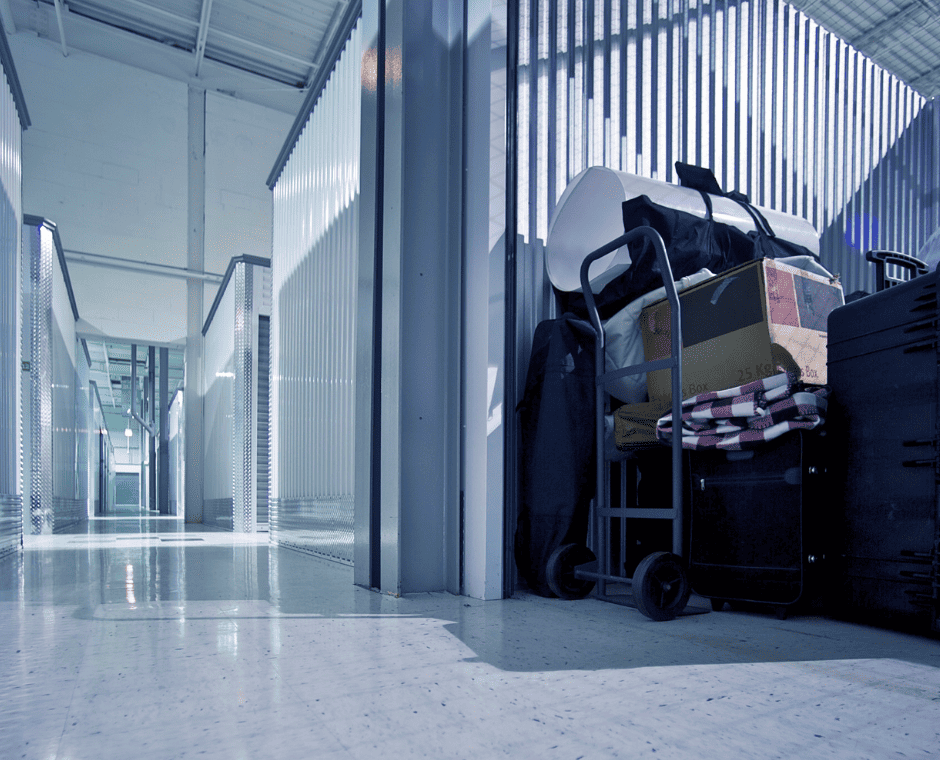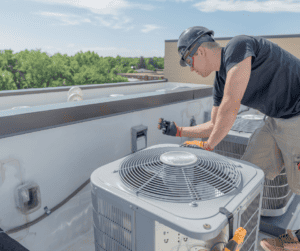Ultimate Guide to Marketing Metrics for Storage Hosts
- October 6, 2025
- Self Storage
Tracking marketing metrics is the key to understanding your storage hosting performance. These numbers reveal how well your efforts attract renters,…
Read More
Climate-controlled storage units are a type of self-storage that provides temperature and humidity regulation to protect items from damage caused by heat, cold, or moisture. This type of storage has become increasingly popular as a way to safely store valuable items like artwork, electronics, vintage furniture, clothing, and other possessions people want to preserve long-term.
Climate-controlled storage facilities utilize HVAC systems, insulation, and air circulation to maintain stable, ideal interior environments between 55-85°F. By keeping temperature and moisture steady, climate control prevents damage from condensation, mold growth, wood warping, and more that can happen with fluctuations. It provides protection and peace of mind for storing precious or irreplaceable items.
Compared to traditional self-storage units, climate-controlled options better shield belongings from harsh weather conditions in any climate. Though they carry 20-50% higher rental costs, climate-controlled units are worth the expense for protecting high-value possessions susceptible to the elements.
Climate-controlled storage units are temperature and humidity regulated spaces that provide added protection for stored items. Unlike traditional storage units which are exposed to outdoor temperatures and moisture, climate-controlled units use HVAC systems and insulation to maintain stable interior conditions (Public Storage).
The climate is controlled through the use of heaters, air conditioners, humidifiers, dehumidifiers, and ventilation systems. Climate sensors and thermostats monitor the temperature and humidity 24/7. When levels drift outside the optimal range, the HVAC systems activate to restore the desired conditions (Move.org).
This active climate regulation protects stored items from damage caused by heat, cold, condensation, and mold growth. Fluctuations in temperature and moisture can warp wood, fade artwork, corrode metals, crack rubber, and ruin electronics. By maintaining a stable environment, climate control prevents deterioration and preserves the integrity of stored belongings (Moving.com).

Climate-controlled storage units maintain a consistent interior temperature, typically between 55-85 degrees Fahrenheit 1. This prevents valuables from being exposed to extreme heat or cold that could cause damage. Fluctuations in temperature can warp wood, crack paint, warp vinyl records, and cause many other types of deterioration. The stable air temperature protects irreplaceable items and prevents this type of harm.
Without climate control, storage units are subject to the external weather and temperatures. In some regions, summer heat can reach over 100 degrees inside a storage unit. The brutal cold of winter can also wreak havoc. Climate control regulates the internal environment to block out the external elements.

Properly regulating humidity is just as important as temperature for climate-controlled storage units. Ideal humidity levels tend to be around 50-55% for storage units 1. This prevents moisture damage from condensation and mold growth, which can happen when humidity gets too high. On the other hand, humidity that is too low can cause items to become brittle or cracked. Maintaining around 50-55% humidity provides a stable environment that protects belongings.
Uncontrolled humidity fluctuations are one of the biggest threats for stored items. Climate-controlled facilities use commercial dehumidifiers and humidifiers to keep humidity within the recommended range. This prevents moisture issues like rust, mold growth, warping of wood materials, and other deterioration. Stable 50-55% humidity allows you to access items without exposing them to moisture damage each time 2. Overall, managing humidity along with temperature is key for protection.
Certain categories of valuables are well-suited for climate controlled storage due to their sensitivity to fluctuations in temperature and humidity. Without climate control, exposure to extreme heat, cold, or moisture can cause irreparable damage.
Some examples of items that benefit from climate controlled storage include:
Electronics like TVs, computers, and other devices can be vulnerable to component failure or corrosion when exposed to temperature swings and excess moisture according to moving.com(https://www.moving.com/tips/17-items-that-require-climate-controlled-storage/). Maintaining a stable, moderate temperature is ideal.

Paintings, prints, photographs, and other artwork can become brittle or fade when kept in an uncontrolled environment, as noted by BTAS Storage (https://btastorage.com/10-items-that-need-climate-controlled-storage/). Climate control protects against fluctuation.

Clothing, linens, upholstered furniture, and other textiles are prone to mildew and pests if exposed to excessive moisture according to U.S. News (https://realestate.usnews.com/real-estate/articles/do-you-need-climate-controlled-storage-for-your-belongings). Controlling humidity is key.

Climate-controlled storage provides valuable peace of mind for storing items that are irreplaceable or hold special significance, such as family heirlooms, antiques, artwork, and photo albums. The stable environment protects these treasures from deterioration, discoloration, warping, and other damage that can occur from temperature and humidity fluctuations.
Additionally, climate control allows easy access to stored belongings without exposing them to extreme conditions. For example, accessing a climate-controlled unit in the winter avoids subjecting items to cold, dry air that could crack wooden antiques. Likewise, entering a climate-controlled space in summer prevents heat exposure that might warp photograph negatives or melt old film reels.
Storing precious mementos in a climate-controlled unit provides the optimal conditions for preservation, so they can be safely passed down for generations without degradation. As Life Storage notes, climate control gives “confidence that no matter what Mother Nature has in store outside, the interior environment will remain stable.” This stability helps ensure irreplaceable possessions emerge from storage in the same condition as when they entered.
Climate-controlled storage units typically cost 20-50% more per month than traditional storage units without climate control, according to StorQuest. This added cost is due to the HVAC systems required to regulate temperature and humidity. Insulation and ongoing electricity costs also contribute to the higher price.
However, climate-controlled storage can be well worth the extra investment for protecting valuables that are susceptible to damage from fluctuations in temperature and humidity. Antiques, artwork, electronics, musical instruments, and other prized possessions stand to be ruined by extreme heat, cold, or moisture if not properly stored. Paying a premium for climate control provides peace of mind that these irreplaceable items will remain in pristine condition.
For less sensitive items like furniture, boxes of household goods, and seasonal items, traditional storage without climate control is usually adequate. But for precious heirlooms, artifacts, or one-of-a-kind objects where replacement is impossible, climate-controlled storage is highly recommended despite the extra cost.
When selecting a climate-controlled storage facility, you’ll want to consider the top national providers as well as local options near you. The major chains like Public Storage, Extra Space Storage, and U-Haul offer climate control at many of their locations across the country. You can search their websites to find a facility nearby.
Some key things to look for in a climate-controlled storage facility include:
Be sure to take a tour of any facility you’re considering to view the climate-controlled units firsthand. Knowing your items will be protected in a stable environment provides peace of mind for any long-term storage needs.

While climate-controlled storage is ideal for protecting valuables, there are some lower cost alternatives in certain situations:
Using moisture-absorbing silica gel packs can help control humidity levels for items in traditional storage units. The packs absorb excess moisture and need to be replaced or dried out periodically. This can work for protecting documents, books, and some furniture. However, it does not regulate temperature fluctuations (https://www.pods.com/blog/non-climate-controlled-storage).
Storing items in waterproof plastic bins or wrap can protect from moisture damage. This may be sufficient for outdoor furniture, tools, and other hardy items stored in non-climate controlled units (https://www.stor-it.com/blog/what-can-i-store-in-a-non-climate-controlled-storage-unit/).
Renting a climate-controlled portable storage container placed outdoors or in a garage can also be cheaper than indoor climate storage. Temperature regulation is limited, but it provides more protection than traditional units (https://sekamoving.com/blog/what-can-i-store-in-a-non-climate-controlled-storage/).
For most irreplaceable or sensitive items, indoor climate control is still recommended. But for some seasonal use cases, these alternatives may suffice at a lower cost.
Climate-controlled storage provides crucial protection for your valuables against damage from humidity, extreme temperatures, and fluctuations. For items susceptible to these conditions like artwork, electronics, musical instruments, and textiles, climate control gives invaluable peace of mind.
Though it comes at an added cost, climate-controlled storage is highly recommended for safeguarding irreplaceable or sensitive possessions. The small upcharge is well worth avoiding potential damage and ruins. As an added benefit, climate-controlled units offer a more comfortable environment for accessing your belongings whenever needed.
When researching storage facilities, look for established national brands that specialize in climate-controlled options. Features like 24/7 climate monitoring and backup generators ensure your items stay in ideal conditions at all times. With the proper climate-controlled storage, you can rest easy knowing your valuables are protected from the elements.
Join The Discussion